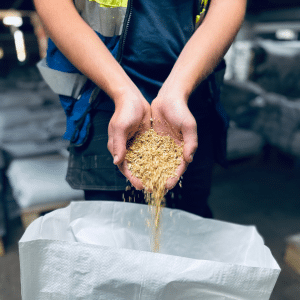While packaging waste is a critical issue, it must be considered alongside the issue of food waste. Fortunately, projects in food packaging, such as the Glopack (Granting society with LOw environmental impact innovative PACKaging) project, aim to help delay spoilage across the food production cycle more sustainably.
Protecting food and preventing spoilage have always been prerequisites for food packaging to ensure their contents reach their destination in good condition, as well as give customers peace of mind that their food is safe and secure.
At the same time, the statistics on both food waste and plastic waste remain stark and sobering. Every year, around 100 million tons of food is wasted in the European Union – equivalent to nearly 30% of the agri-food supply chain – with devastating environmental consequences.
While there is no doubt that packaging waste must be addressed, it must be considered alongside the issue of food waste. If the goal is to minimize overall global greenhouse gas emissions, and conserve resources such as water and land, then companies must use a balanced scorecard to ensure we make the best decisions to protect the environment.
Fortunately, advances in more sustainable food packaging are helping to delay spoilage across the food production cycle. The GLOPACK project aims to create innovative packaging solutions which address the challenge – minimising food waste and loss while fighting plastic pollution. By developing real alternatives to fossil-based packaging and tools to support food companies choosing the right packaging for their products, the project focused on three promising areas of packaging innovations:
- Biobased and biodegradable packaging.
- Active packaging and
- Intelligent packaging.
Consumers embrace sustainable practices.
According to PwC’s June 2021 Global Consumer Insights Pulse Survey, in just a six-month period, half of all global consumers surveyed said they have become even more eco-friendly and, expect companies to follow similar environmentally conscious practices within their operations. One way for food companies to strengthen their brands and attract consumers is to wrap the product appropriately and use environmentally friendly materials.

The GLOPACK injection molded, and thermoformed trays and cups are made by mixing a biopolymer called polyhydroxyalkanoate (PHA) with leftover straw from wheat harvests and vine shoots (PHA is a family of bacterial polyesters that are fully bio-based and fully biodegradable in natural conditions).
Not only is this a fantastic example of repurposing excess produce, but the developed material is also completely biodegradable when exposed to water and carbon dioxide at room temperature. Therefore, we can consider this novel material among the most promising alternatives to oil-based synthetic polymers. Materials like these that use waste will ultimately help the food industry become less dependent on petrochemical products, setting it up towards a more sustainable future.
Active and intelligent packaging – two powerful weapons
If you’re unaware of what active packaging is exactly, it is often defined as a packaging system that maintains and may even improve the health properties, organoleptic properties and quality of the packaged food product, thereby extending its shelf-life. The packaging that the GLOPACK project has developed relies on antimicrobial compounds and oxygen scavengers to improve food preservation and the shelf-life of products.
The biodegradable packaging was also enhanced with active and intelligent packaging functionalities which provides the user reliable information about the condition and quality of food.

In GLOPACK, a sensor-enabled radio frequency identification (RFID) tags system embedded in the packaging’s label transmitting information to devices like a mobile phone was developed. These tags are battery-free and are coated in a layer of plant-based proteins that emit a weak electrical signal when the gas inside the package changes. The RFID tags enable the consumers to track the freshness status of the food and to prevent avoidable food waste and losses due to misunderstanding of the expiry date. This novel RFID system was successfully validated on red meat packaged in modified atmosphere packaging (MAP).
Choosing the right packaging
Deciding which packaging to choose can be a mammoth task – especially for small food companies. These businesses often rely on the experience and advice of their suppliers to select the most appropriate packaging for their product, but this may ultimately narrow their options. Our experience at Campden BRI has found that many food businesses – big and small – are not aware of the new, available technologies that can help them choose the most appropriate packaging.
To fill this gap and to enable the implementation of new packaging solutions, as part of the GLOPACK project, a team of researchers and packaging experts have developed a decision support system (DSS). The DSS software tool provides a food manufacturer/packaging producer with an insight into the packaging materials available for their specific product. By extension, it will help them to select one which best matches their requirements.
Next generation of food packaging
GLOPACK aims to bring together industry-leading experts by operating a stakeholder platform. It allows for knowledge exchange and discussion relating to food packaging and valorisation issues to allow the experts to develop packaging that suits food business operator’s needs and expectations.





